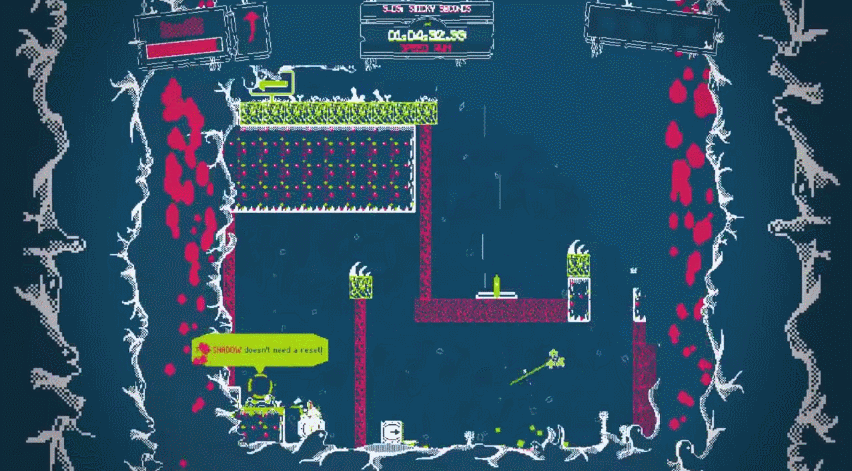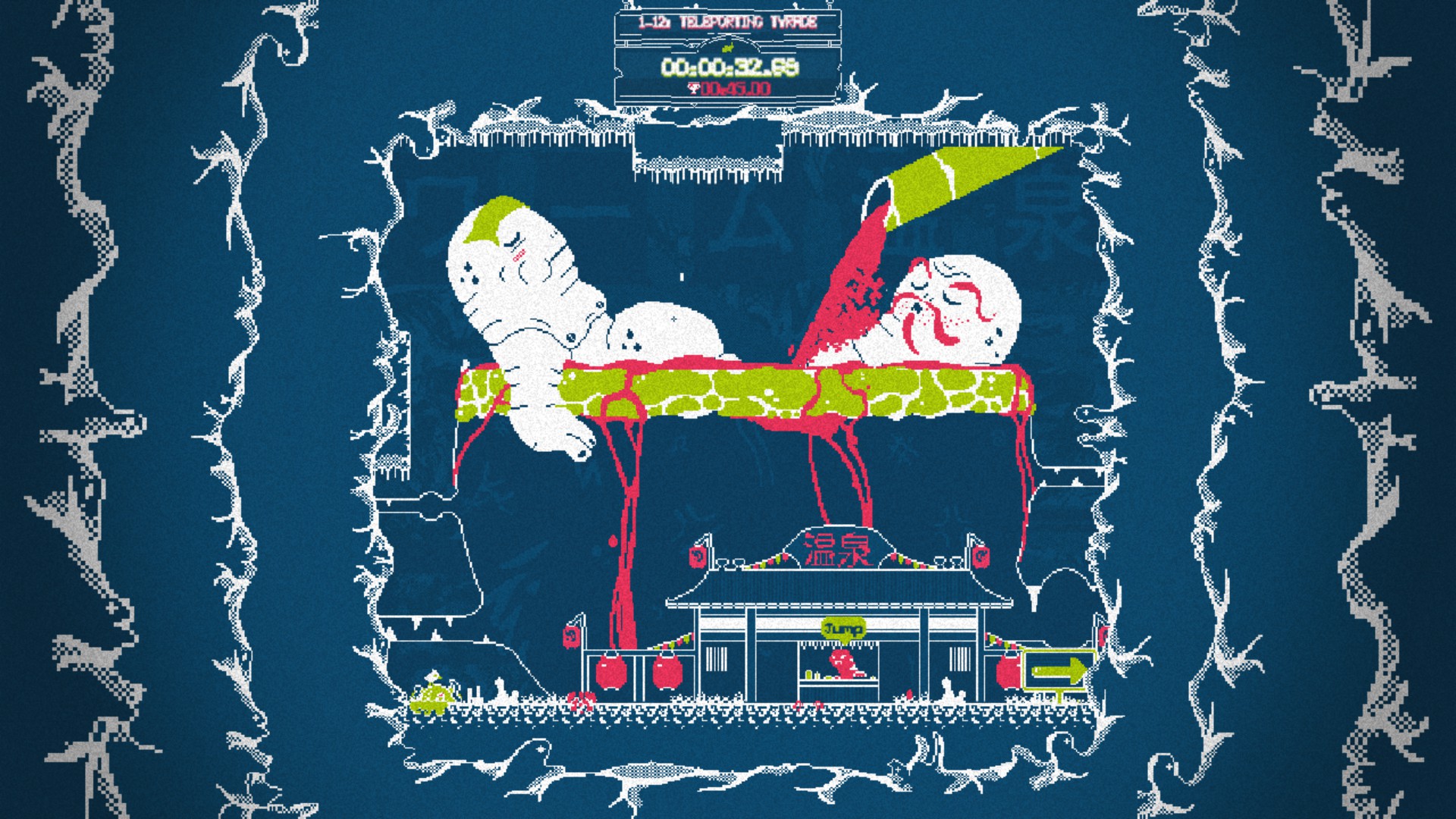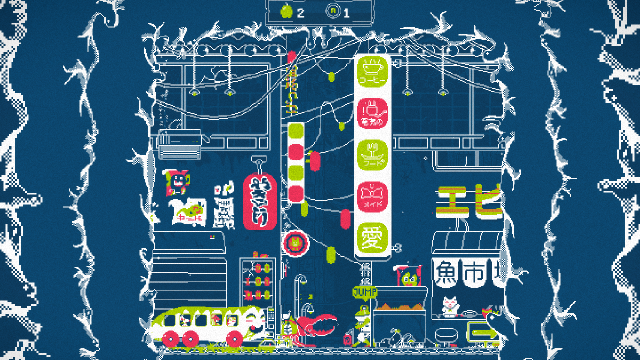Slime-San is the type of twitchy, lighting-quick platformer I’m happy to spend hours dying in. Filled with micro levels similar to Super Meat boy, the fourth project from the New York studio Fabraz takes the labyrinths of classic games like Super Mario Bros. and Donkey Kong Country and condenses them down into a single screen that pulses with obstacles and possibilities.
In it you play as a little green slime who gets trapped inside the belly of a worm and needs to hop his way back out to safety. As a result, each level has a time limit, with a deadly wave of stomach acid that eventually scrolls across to incentivise progress. You can hop and dash in mid air, as well as slow down time and jump up walls, making every gauntlet easy to out manoeuvre if you can stay composed and graceful.
Slime-San is on PC and Mac (with Fabraz looking to port the game to consoles through its publisher, Headup Games), but it’s best played with a controller. Despite all of the abilities that need to be managed, there’s really no replacement for the intuitive handling of the thumb-stick when combined with a jump button, especially since anything on the screen that’s red will automatically kill you. In this way it’s like platforming inside an the holes in an Operation board game, where the trajectory of your falls matter as much as anything else.

Not content just to replicate the basic jumping and dodging of a classic platformer, however, Slime-san also has a time dilation mechanic that makes it possible to both slow down time and pass through certain porous green objects. What seems like an ability that could break the game actually makes it that much more difficult though.
Like trying to pat your head and rub your stomach at the same time, the games dualism and constant reversals make it even more complex than the chiptune soundtrack and simple, five-colour palette make it otherwise seem (the game’s visual contrasts and Japanese references make the otherwise lo-fi presentation surprisingly vibrant).
For example, in one section I needed to fall down a cavern by slipping through alternating green platforms, but then jump to the left and dash in mid-air to a nearby ledge. But a few balls of red acid were orbiting around the spaces in-between, so while I needed to slow-down time to get through the first part, failing to speed it back up at the right moment would put me right in the path of the acid’s patrol route.
This was relatively early in the game as well. Later on, Slime-san layers on new concerns and puzzle mechanics that force you to grow and train your reflexes in new and interesting ways.
And that’s where the dying comes in. Like OlliOlli or Hotline Miami, the game restarts almost instantly after you die, so much so that it’s easy to run ahead and make the same mistake that just got you killed all over again, as if the twitch reflexes the game has been training your hands to execute are moving faster than the brain that’s supposed to be telling them what to do.
The game tracks your deaths, and usually on at least two or three stages per world (each section of the game ends in a boss fight) I found myself dying in rapid succession as I tried to brute force my way through the game’s obstacles. Fortunately, because each stage is so short, these deaths work less as a form of punishment than data collection. Like Tom Cruise in Edge of Tomorrow (or the protagonist from All You Need Is Kill, the manga the film was based on), each death provides new intelligence on the world around you.
While you can try to eyeball each stage and discern the solution mentally, Slime-san encourages you to grope for it through failure instead, dying until you don’t just know the solution but feel it in each little bundle of muscle fibres.

This isn’t necessarily uncharted territory for platformers. Limbo, and more recently Inside, both play with death and its simultaneous consequences for narrative and discovery. Super Meat Boy, Slime-san‘s most obvious predecessor, did something similar when it took the art of the perfect jump and made progress bite-sized. But even if Fabraz’s game isn’t entirely unique in this respect, it still feels like a refinement.
Slime-san also augments the feel of games like Super Meat Boy and Super Mario Bros. by making matters more fluid. You’re a hunk of slime after all, slipping, sliding, and falling upwards through a worm’s digestive track, and when things really get going, you almost never have to touch the ground, gliding between traps instead of constantly landing right before or after them. As a result, the game’s perfect for speedrunning, not because it’s littered with glitches or exploits, but because the games underlying beauty truly only surfaces when you’re playing it as fast as possible.

Comments